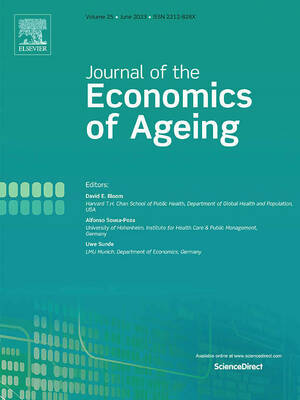Estela Rivero, Senior Researcher at the Pulte Institute and Co-Director of the Central American Research Alliance (CARA), has recently co-authored a peer-reviewed article with Iván Mejía-Guevara, Senior Research Scientist at the Stanford Center for Population Health Sciences. Their study, "Intergenerational paid and unpaid labor production and consumption inequality by gender in Mexico," has been accepted for publication in The Journal of the Economics of Ageing and will appear in print in February 2024.
The subject of economic inequality is often discussed by scholars from diverse fields. While global inequality between countries has declined during the last 30 years, within-country inequality has increased, partly due to the dramatic concentration of wealth and income, policy choices, and macroeconomic effects specific to each country. Since previous research has disregarded the interconnected effects of inequality of opportunities across genders and generations, Rivero and Mejía-Guevara propose to understand inequality from a generational perspective, focusing on data from 1994, 2004, and 2014 Mexico.

This study analyzes changes in the population composition, labor income, and consumption by age and socioeconomic status. From a gender perspective, analyzing inequality is crucial due to historical social norms and gender differences in labor force participation, which attribute women to a predominant role in unpaid care and household production, while men assume the predominant role in market production. The study aims to contribute to this critical topic by analyzing economic and unpaid care workflows by age and gender in Mexico, emphasizing paid and unpaid labor production and consumption inequalities.
Rivero and Mejía-Guevara reveals five findings. First, secondary education might not be enough to significantly reduce inequality. Second, progress in reducing labor income and consumption inequality among educational groups stagnated or reversed by 2014. Third, substantial differences exist in labor income and consumption across socioeconomic groups, with men consistently earning more than women. Fourth, unpaid household production varies across educational groups, with women in the most educated group dedicating the least time to these activities, while men in this group contribute more than other groups. Lastly, unpaid care and household production plays a significant role for women, and if they were compensated, it could considerably equalize labor income across genders and socioeconomic groups.
Article’s full citation:
Mejía-Guevara, Iván and Rivero Fuentes, María Estela, "Intergenerational paid and unpaid labor production and consumption inequality by gender in Mexico," The Journal of the Economics of Ageing, 27 (2024), https://doi.org/10.1016/j.jeoa.2023.100496